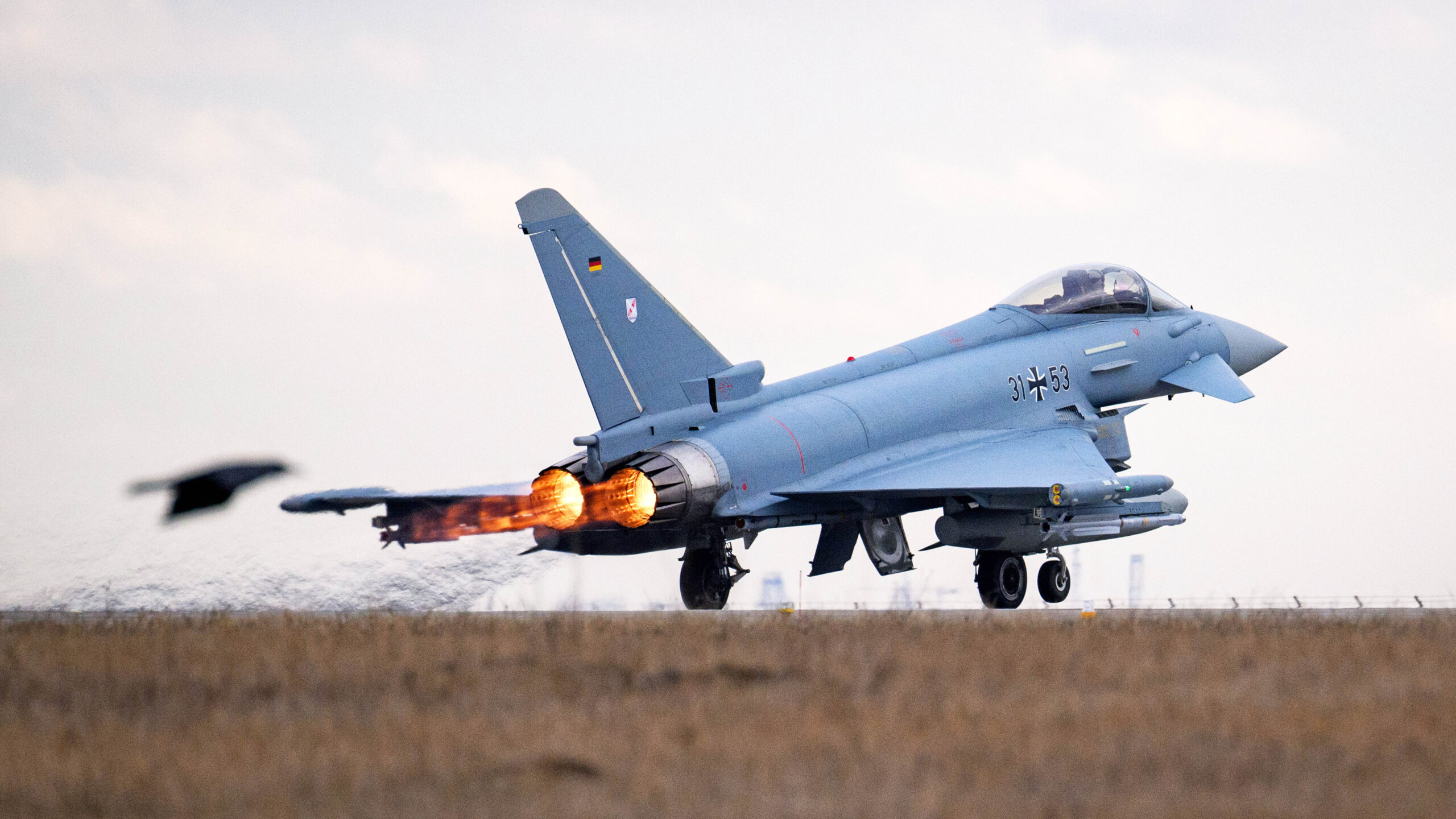Russian drones targeting Ukraine entered NATO airspace over Romania during the night, leading to the scramble of NATO fighters deployed in that country. The Romanian Ministry of Defense has confirmed that at least one of those drones exploded in its territory, although it was not shot down. Meanwhile, Romania has summoned Russia’s envoy over what is the latest in a series of drone violations of its airspace.
According to a report from the German Press Agency (dpa), Luftwaffe Eurofighters scrambled from their Romanian base in the night to respond to the airspace violation. The Russian drones “were identified by the German crews, including by visual contact, without an order from NATO to shoot them down,” dpa reports.
The German Luftwaffe is currently involved in a rotational deployment to the Romanian 57th Air Base, Mihail Kogălniceanu, near Constanța, on the Black Sea. From here, the four German Eurofighters support the Romanian Air Force in protecting NATO’s southeastern flank including the busy airspace over the Black Sea.
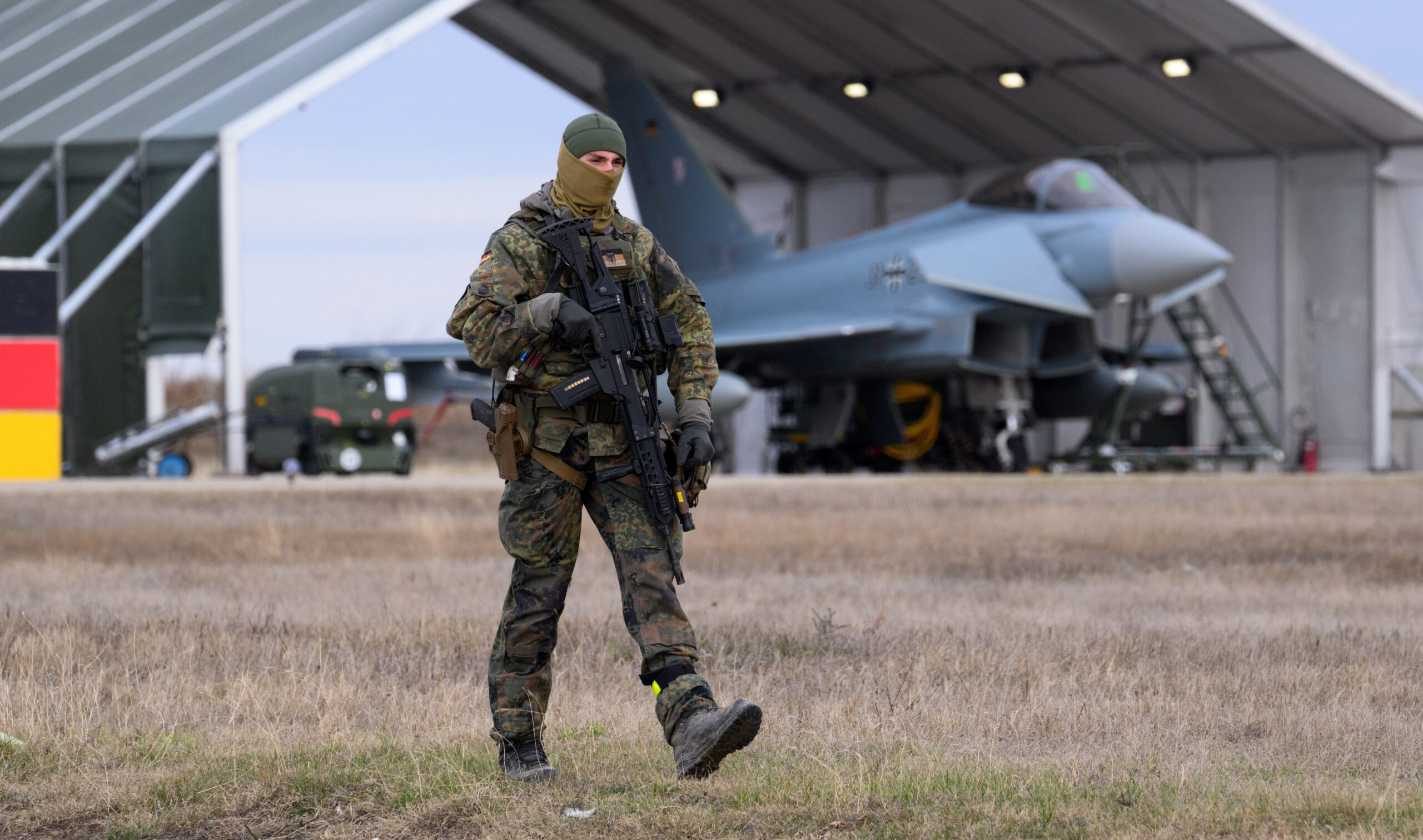
Also involved in the incident were Romanian Air Force F-16s, operating from the 86th Air Base at Fetești, home to a new training center that will also teach Ukrainian Viper pilots. F-16s now form the backbone of the Romanian combat fleet, following the retirement of the MiG-21 LanceR. Romania received 17 second-hand F-16s from Portuguese stocks and has now begun to receive the first of 32 more from Norway.
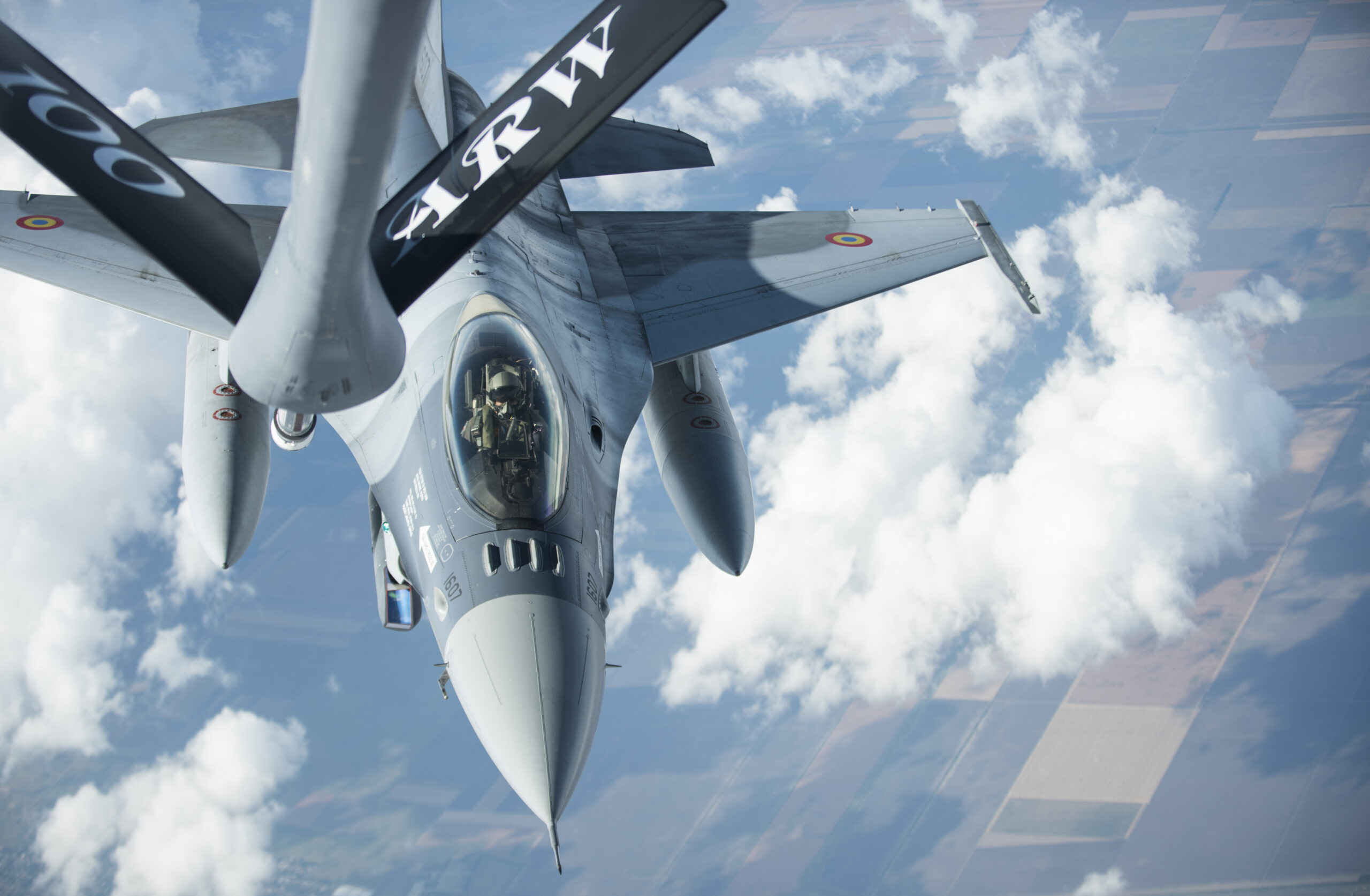
The NATO Combined Air Operations Center reportedly began tracking the drone strike at 8:42 GMT yesterday, with the order for an ‘Alpha scramble’ following at 9:02 GMT. An ‘Alpha scramble’ involves a jet — or more usually two — armed with live air-to-air weapons being sent to investigate an unidentified or potentially hostile threat. The fighters were airborne at 9:11 GMT in an incident that NATO considered “significant,” according to dpa.
The dpa report suggests that Russia launched “up to 70” Iranian-designed Shahed-136 one-way attack drones against Ukrainian targets overnight.

The Ukrainian Air Force claims that 41 of 42 drones launched by Russia were shot down during the night, most of them over the Odesa region that borders Romania.
Regardless of the disparity in figures, one of those drones appears to have come down on Romanian territory, according to the Romanian Ministry of Defense. This particular drone was tracked by Romanian air defense radar, according to the Romanian Ministry of Defense.
Romania’s military radar network “indicated a possible unauthorized entry into national airspace, with a signal detected at low altitude en route to Grindu.” The town of Grindu, in the county of Tulcea, on the Danube delta, is around four miles from the Ukrainian border.
The ministry confirmed that the “uncontrolled crash of a drone used in the attack against the Ukrainian port infrastructure” left a five-foot-deep crater in an uninhabited area about 2.5 miles outside of Grindu.
“Measures were taken to secure the area and the competent authorities were notified to collect evidence and conduct investigations, according to the procedures in force,” the Romanian Ministry of Defense added.
Since this summer, when it walked away from a deal that aimed to protect grain exports through the Black Sea, Moscow has embarked on a campaign to attack Ukrainian ports and other facilities on the Danube, with extensive use of drones.
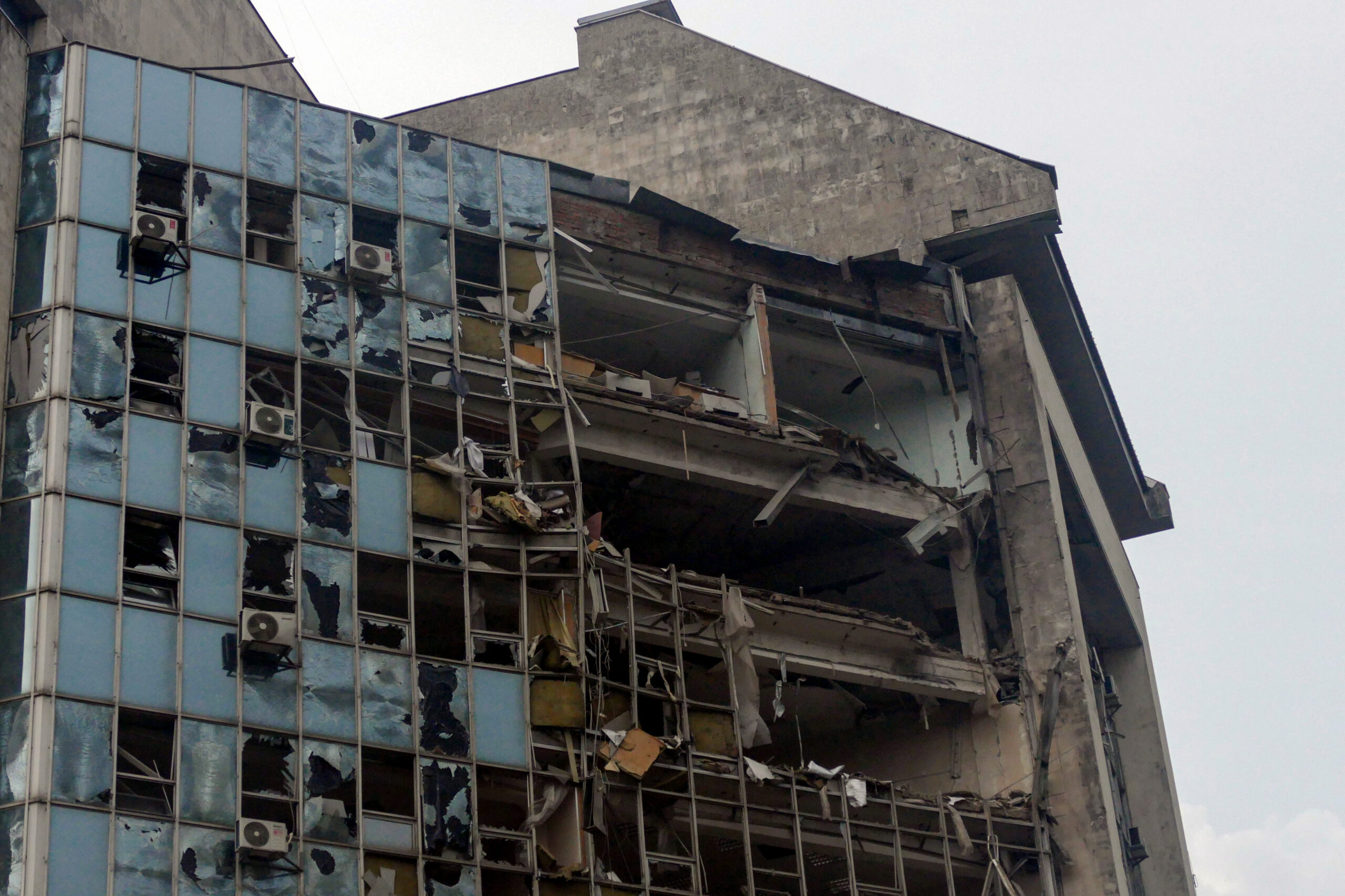
This is not the first incident in which Russian drones flying from the Ukrainian side of the border have violated Romanian airspace. Drone wreckage was found in Romania, close to the border with Ukraine, in September and October, although there is no evidence that the NATO country was deliberately targeted.
In the September incident, Romanian officials said that they had discovered parts of a drone “similar to those used by the Russian Armed Forces,” and took the matter to the head of Russia’s diplomatic mission to Romania.
The head of the Russian diplomatic mission has now again been summoned to discuss the latest incident, which the Romanian Ministry of Foreign Affairs described as a “new violation of Romania’s airspace, contrary to international law.”
The Romanian Ministry of Foreign Affairs said it condemned Moscow’s “repeated attacks” and that it is now involved in talks with “NATO allies on developments at the Romanian-Ukrainian border, including today’s incident.”
An alliance spokesperson, Dylan White, told The War Zone that “NATO has no information indicating any intentional attack by Russia against allies. We strongly condemn Russian attacks against civilian infrastructure in Ukraine and along the Danube. We continue to monitor the situation, and remain in close contact with the Romanian authorities.”
Already, Romania has taken measures to protect the population near the border with Ukraine, including constructing air-raid shelters in the eastern Romanian village of Plauru.
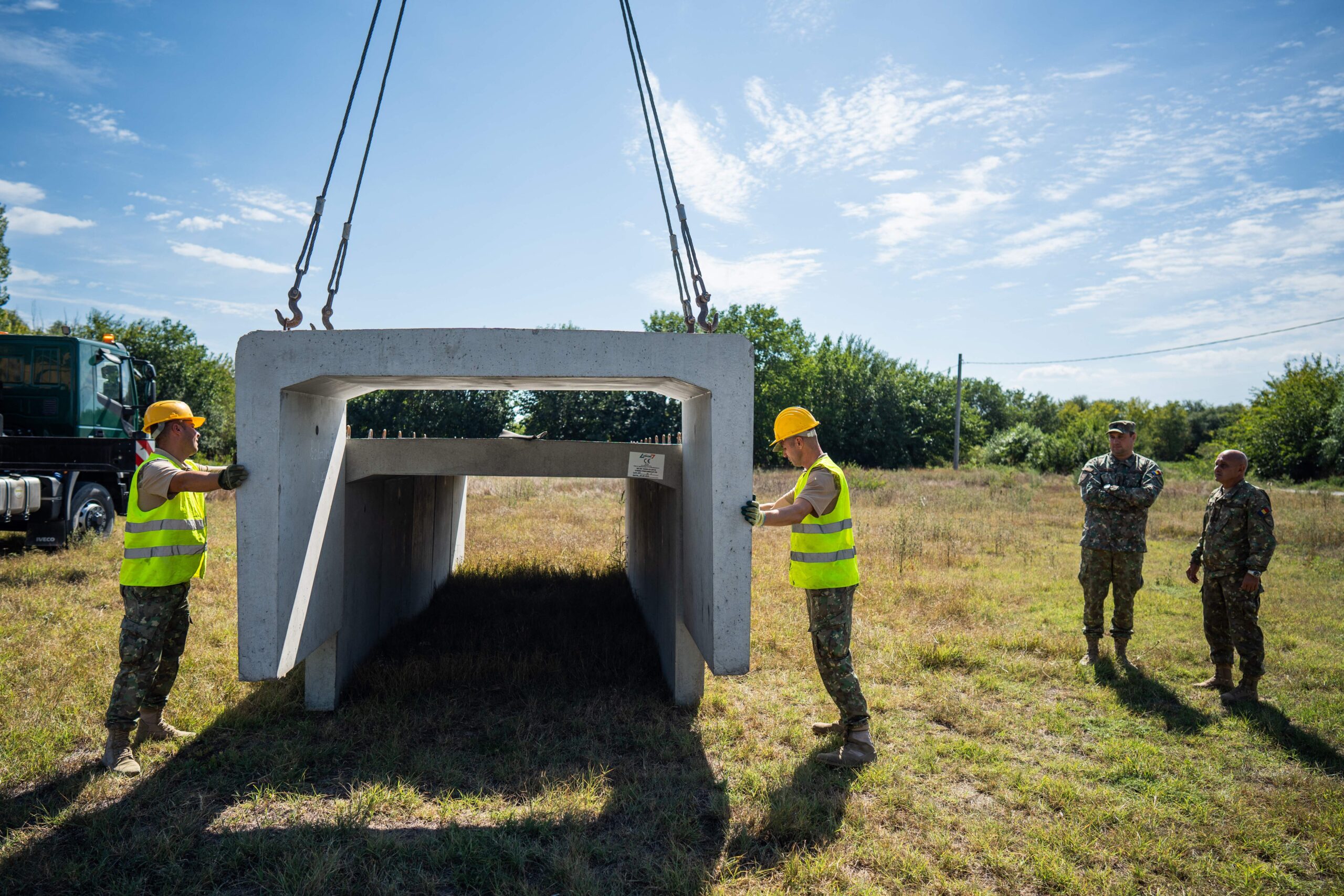
In the wake of the latest incident, the Romanian Ministry of Defense says that its forces “will continue to conduct airspace monitoring and surveillance missions in the areas where risks may arise as a result of these situations.”
The incident, and others like it, could also increase momentum behind the modernization of Romanian air defenses, especially its fighter fleet. Although it continues to receive F-16s, a possible F-35 purchase is also looking increasingly likely.
What’s unclear, at this point, is how NATO might respond to future airspace violations of this kind. On this occasion, it seems there was no order given to shoot down the drone after it entered Romanian airspace. This may well indicate that it was judged not to present a significant threat. But a drone of this kind — with an integral warhead — would attain an entirely new level of threat if it were to be headed toward a population center.
In that kind of scenario, it would not be surprising if attempts were made to bring down the drone, although that’s easier said than done, even with a missile and cannon-armed fighter. Romania also operates Patriot air defense missile batteries, which could also be used to down drones. Interestingly, last month saw training take place at the Capu Midia firing range on the Black Sea, in which Patriot batteries practiced engaging small drones.
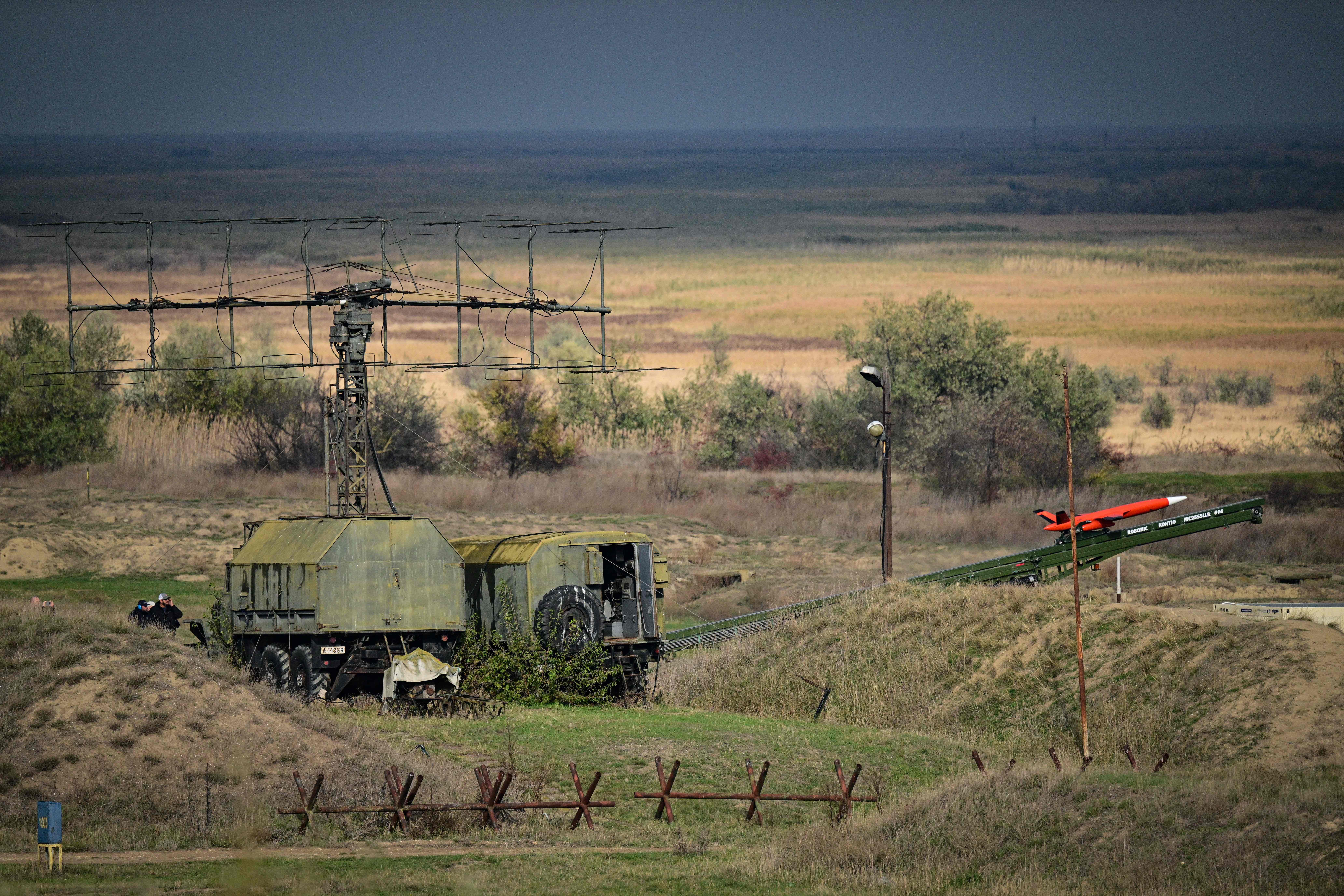
At the same time, Romania has expanded a no-fly zone along a section of the border with Ukraine to up to 20 miles inside Romania and to a height of 4,000 feet. Introduced in mid-September, this was intended as a deterrent against Russian drones from deliberately entering Romanian airspace to reach enemy targets.
There have been previous encounters between NATO and Russian crewed aircraft and drones around the Black Sea in recent months.
In March this year, a Russian Su-27 Flanker fighter brought down a U.S. MQ-9 Reaper surveillance drone over the Black Sea. A video released by the Pentagon soon after seems to confirm that one of the Su-27s struck the drone’s propeller, although it remains unclear to what degree that action was deliberate or a misjudgment. Nevertheless, the Flanker pilot was awarded a medal for their actions.

In an incident in September 2022, the pilot of a Russian Su-27 fired at least one, possibly two missiles in the vicinity of a U.K. Royal Air Force RC-135W Rivet Joint surveillance aircraft over the Black Sea. The missile launch was first explained by Russia as a “technical malfunction,” although leaked classified materials from the U.S. Department of Defense later suggested that the Flanker pilot actually opened fire deliberately after he misunderstood an order.
The violations of NATO airspace by Russian drones, while almost certainly accidental, further reflect the potential for misunderstanding and dangerous escalation that exists in the Black Sea region, where NATO and Russian forces operate in close proximity.
Contact the author: thomas@thedrive.com
